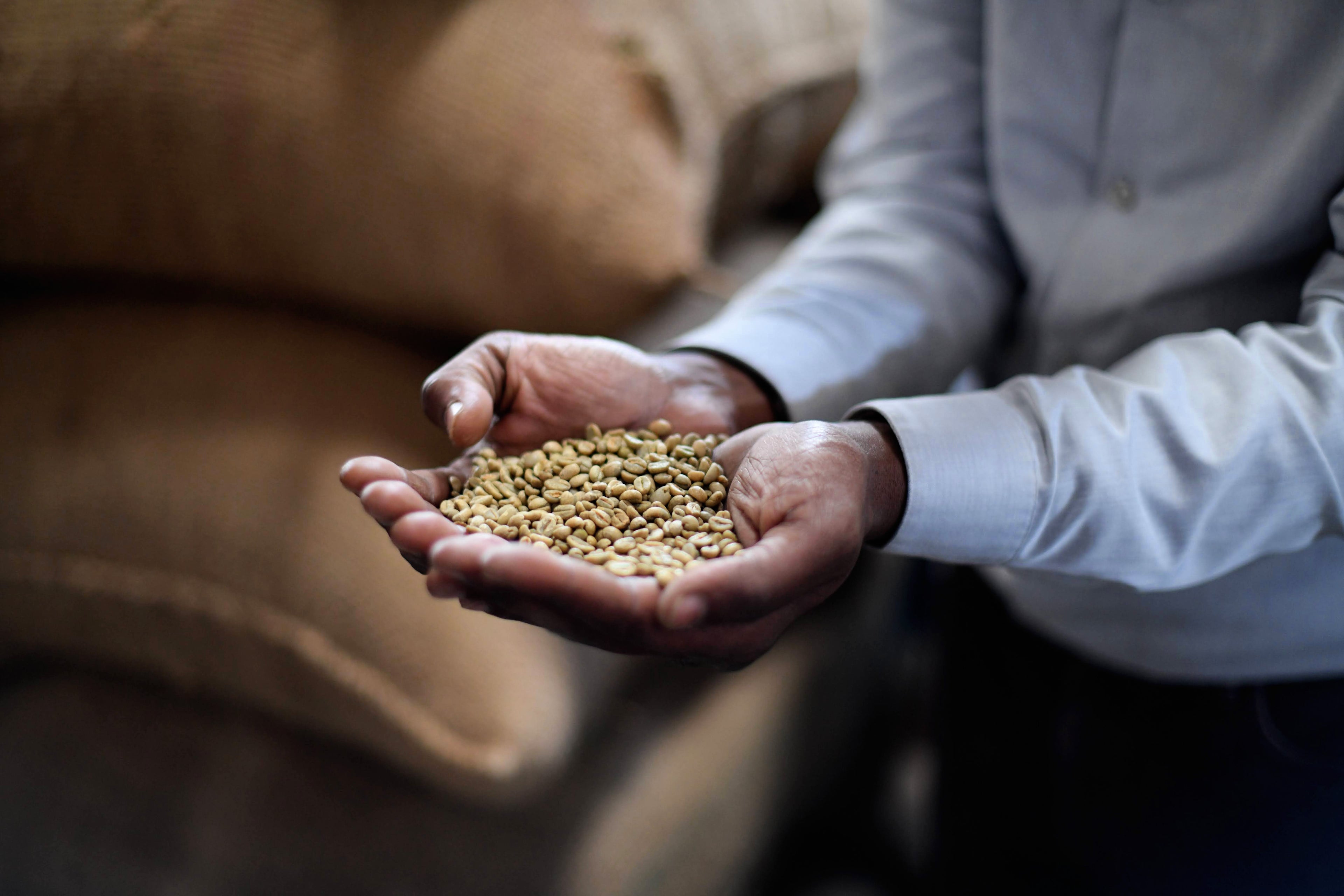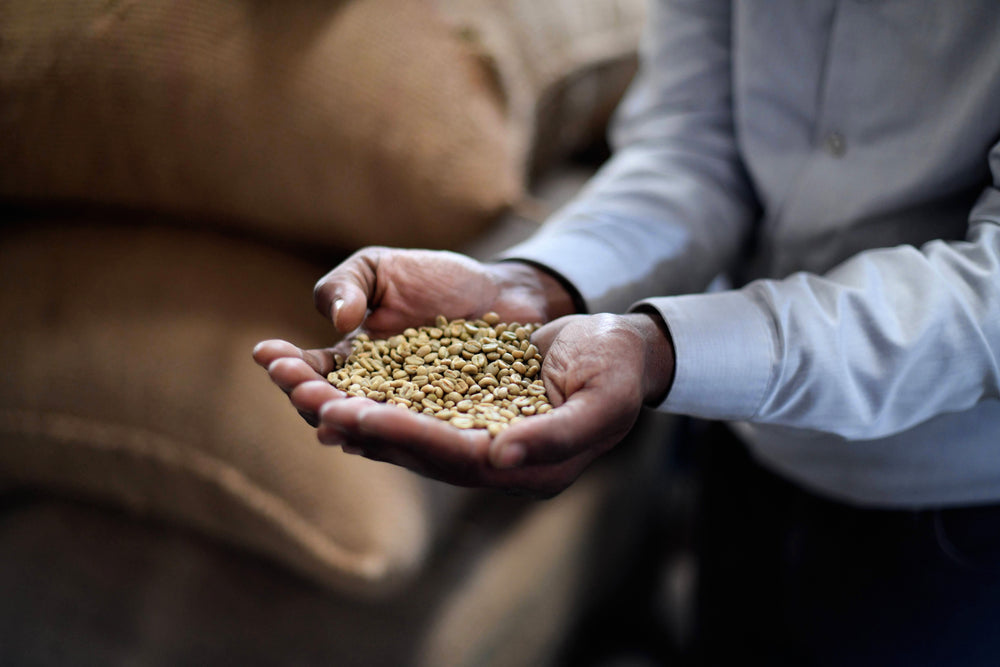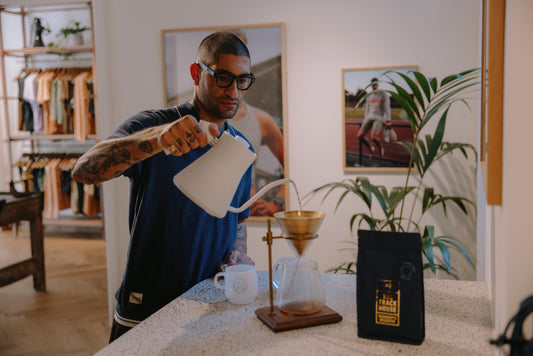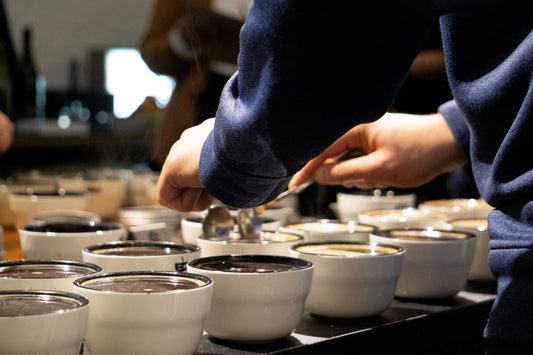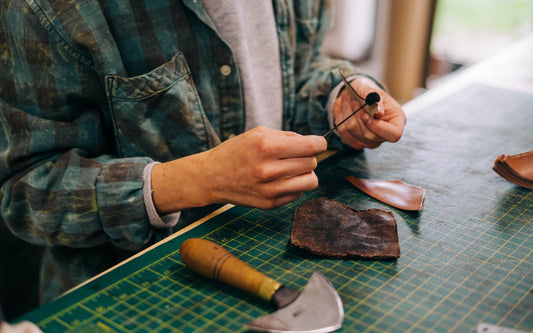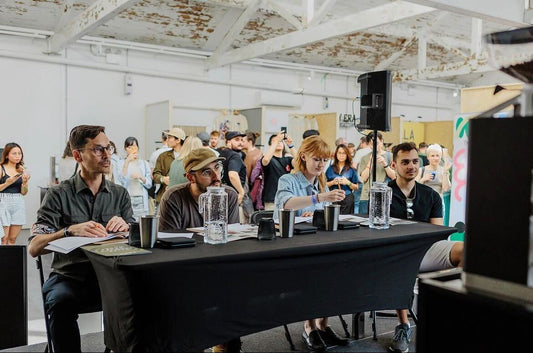
Preparing coffee in a Jebena outside the Snap dry mill in Dukem.
 En route to the dry mills located outside Addis.
En route to the dry mills located outside Addis.
It is a wonderful feeling to be able to meet the many people responsible for producing the coffees we get to work with, day in and day out. Having spent the last three years working with Snap Coffee, thanks to Nordic Approach introducing us to their coffees, we were itching to finally meet with them and see their operations in Ethiopia. At the end of February 2023, we spent a week in Addis Ababa cupping through many tables to make our selections for the year, as well as taking time to visit several dry mills and connect personally with Negusse Weldyes and several of the key members of Snap.


 Snap's pristine and well organised dry mill.
Snap's pristine and well organised dry mill.
From the moment you step into the Snap dry mill, you instantly witness their attention to detail. Visiting dry mills can typically be an assault on the senses. They are noisy, dusty and you need to be sure footed to avoid tripping over or knocking into the wealth of pipes, conveyers and silos. At Snap’s mill in Dukem, just outside of the capital, they have invested in two distinct production lines, one to mill and grade natural processed coffees, and another line for washed coffees. With 90-95% of the season’s washed coffees in the warehouse already, piled up in neatly organised bays with tracebility reports tagged onto each stock lot, there was still no sense of chaos or disarray and the whole space was noticeably clean. We know how much work goes into keeping one small coffee roastery clean (coffee isn’t exactly co-operative in green or roasted form when it comes to leaving spaces spic and span) and so it was impressive to see gleaming floors and pristine machinery in the midst of the season.


Learning from Bahiru, the mill manager.
Bahiru, the mill manager, very graciously showed us around, detailing each step from when the parchment coffee initially arrives at the warehouse and through each subsequent step which performs an integral process to produce the highest quality possible. A truckload of parchment coffee will arrive from a washing station having been sampled, cupped and assigned a grade at the quality lab located close to the wet mills. When another delivery from that station arrives it can be consolidated with the previous delivery if the grades match, with one crucial step that a physical marker (a layer of jute sacks for example) separates the outturns to allow for a distinction to be made between the lots. This is a great practice, as when we are cupping the lots as a potential buyer we can look at multiple deliveries and assess a station’s output with more scrutiny.
When it comes to milling the lots they are taken to the relevant production line whether they are washed or naturals. After removing any foreign debris and going through the destoner, those green coffees going on the washed line will see the parchment milled off and the seeds polished to remove the more persistent silverskin layer. Sieves are then used to grade the coffee seeds by size and a gravity separator table refines by density. The jewel in the crown is the new optical colour sorter that has been installed this season, using 20 cameras to gain the utmost control over removing off-colour, malformed and damaged seeds. Before they are quite done with it there are three long conveyers for teams to sit at for a final hand-sorting stage, with an adjustable speed dial for lots when a little more time needs to be taken to get the desired result.
These steps cumulatively reduce the weight of the starting matter, and they will typically require 450 sacks of parchment to create a container’s worth of green coffee. For Grade 2s and lower they will alter the specifications on the optical sorter to not be so fussy, but some Grade 1 coffees may result in a 60% loss in weight to achieve the required quality and uniformity.



Stock lots in the warehouse, from which Sesay will take samples from each bag to create a representative sample.
When touring the warehouse and examining the traceability reports we learnt a lesson: with good intentions, we have been using slightly incorrect terminology when naming and detailing our coffee information for all previous Snap releases. I fall on my sword for this, but thankfully this allows us to better clarify things this year.
Previously we will have touted a lot as coming from the ‘Danche’ washing station or ‘Riripa’ washing station, that we have said is Snap owned and operated. This is, in a sense true, but omits details that we weren’t aware of. Snap cannot technically ‘own’ washing stations whilst also being an exporter. The name on the traceability report will detail specifically who owns the washing station, and Snap will finance the operation.
They also employ a quality manager to oversee the practices undertaken at the stations they ‘run’ to maintain and improve quality standards. Previously an employee called Abenezer Asfaw was running logistics at Snap and has this season begun running his own operation called Origin Land Coffee, from whom we cupped some very promising samples. We connected with the new quality manager for Snap, Medhin, and even managed a little cupping with him, and it was great to see how strict he is when assessing his own coffees.
So, the washing station is financed by and operated by Snap, but what was most important to learn is that there are multiple washing stations within these kebeles and woredas, that aren’t actually named and so can be presented as one and the same when they are in fact different operations entirely. Differentiating between one site dubbed ‘Chelelectu’, ‘Konga’ or ‘Refisa’ is therefore quite tricky without understanding the supply chain in more detail. One wine producer in Arbois-Pupillin will have a different expression of the varieties and climate than another, just as one washing station in Nensebo Refisa may offer a different degree of quality than another. In lieu of the washing stations having dedicated names we will continue to identify the ‘Producer’ of the coffees alongside primarily presenting the kebele as the coffee’s name. For example, ‘Riripa Espresso’ produced by ‘Snap Coffee & 750 smallholders around Sorfta, West Arsi, Oromia’.


Cupping in the Tropiq lab at Snap Plaza in Addis.
Speaking of Riripa, we were really impressed time and again by the lots being processed in this area at Snap’s washing station. The standouts time and again were lots from their stations in the following areas: Danche, Aricha and Riripa. We also loved the coffees from Hunkute (a member of Sidama Coffee Farmers’ Co-operative Union) and Nano Challa (from the Kata Muduga Union), which we will also be pursuing again, but it has to be said that for overall variety, consistently high quality and the trust we have had instilled by visiting their operations we are going to continue to buy heavily from Snap Coffee. After sampling hundreds of bowls of coffee you can work up quite an appetite, so sharing some Shiro Wat and Injeera becomes an imperative.
We were privileged to meet with Negusse Weldyes, the owner of Snap Coffee, as well as his son Amanueal who has been working for the company for several years to learn about how they are evolving and what challenges they are facing this year.
Prices in Ethiopia last year were very high, and this year they have risen dramatically again. The minimum prices set to buy cherry in the field has escalated and the amount of Ethiopian Birr required to buy a kilogram of cherries may have sat around 12-14 only a few years ago, whereas they have heard of stations in the West paying 100 Birr per kg this season. 60 Birr per kg has not been uncommon for Snap this season, and what was laudable was that Negusse kept the Snap operations going throughout the season, whereas a lot of competitors and other operations were too hesitant and had been waiting for prices to come down before they began to purchase and process cherry. This is important as the smallholder farmers who actually grow and harvest the coffee cherries that become the product we end up buying and roasting have been given access to market at Snap’s stations, rather than be forced to perform home processing to produce low grade naturals that will only be sellable into the internal market.
As well as continuing to buy cherries at premium prices Snap have even expanded their operations, with 30 stations in their fold, including new sites at Gasure, Hadda, Mewa and Hara Buluk. They are installing cherry colour sorters at those sites when they are focussing more on naturals, which is again a testament to their willingness to evolve, invest and improve quality. They even have some Colombian made optical sorters being installed to sort washed coffees at the wet mill level. Amanueal was telling us about their scheme to improve traceability whereby every smallholder delivering cherries gets their consignment of fruit logged and it will enable each station to identify the top producers as well as feedback when there are positive or negative cupping results to more specific growers enabling better assignment and direction of training resources. They bought 100,000 seedlings last year to distribute to growers in the three main districts where they are working, as well as having new logistics procedures to ensure their containers are properly primed and sound before coffee is shipped. This shows they are not just focussing on high profile areas like producing more anaerobics, but actually providing support all the way through the supply chain.
 Medhin is the quality manager for Snap Coffee.
Medhin is the quality manager for Snap Coffee.


Adham was our gracious host from Tropiq.
We would not be able to work with Negusse and Snap Coffee without partnering with Nordic Approach and Tropiq, and their staff were very gracious in showing us their own practices and protocols, so that we could learn more about what service they provide in getting the best coffees into our roastery. Sesay, Helena and Lenok work in the lab, and every dry mill and producer we visited talked about how much respect they have for Sesay and how thorough she is in sampling and ensuring the dry milling of each lot is done properly. If things fall short they will go through the whole process again until the quality is at the right level. Adham from Tropiq was our main host when out and about and we learnt so much from him, as well as being able to meet with Joanne and Alec, with whom we’ve spent many hours on the road in several producing countries.
 Whilst prices are definitely high this year we do not wish to simply pivot to other origins or lower our standards to get a better deal. We see the value in what Snap and other Unions are doing, for smallholders and their livelihoods as well as their efforts being undertaken to produce high grade specialty coffees. This is not without its challenges, as we are running a house blend, José & Negusse, which is offered at a fixed price point. Our Peru coffees were also incredibly expensive compared to previous years and so we are going to feel the pinch on this line, but see the inherent value in providing this stable yet spectacular tasting coffee year round. There will no doubt be some increase on the filter pricing, for example lots from Danche and Nano Challa, as well as a small bump on espresso prices from Aricha, Riripa and Hunkute. We’re sure that some roasters won’t be carrying as much Ethiopian coffee this season, and can see the arguments for both sides, but what has always driven us is the desire to create memorable coffee drinking experiences, and without the right green coffees none of this is possible.
Whilst prices are definitely high this year we do not wish to simply pivot to other origins or lower our standards to get a better deal. We see the value in what Snap and other Unions are doing, for smallholders and their livelihoods as well as their efforts being undertaken to produce high grade specialty coffees. This is not without its challenges, as we are running a house blend, José & Negusse, which is offered at a fixed price point. Our Peru coffees were also incredibly expensive compared to previous years and so we are going to feel the pinch on this line, but see the inherent value in providing this stable yet spectacular tasting coffee year round. There will no doubt be some increase on the filter pricing, for example lots from Danche and Nano Challa, as well as a small bump on espresso prices from Aricha, Riripa and Hunkute. We’re sure that some roasters won’t be carrying as much Ethiopian coffee this season, and can see the arguments for both sides, but what has always driven us is the desire to create memorable coffee drinking experiences, and without the right green coffees none of this is possible.
We are very grateful for your support and hope you love these coffees as much as we do, keep an eye on our social media for updates as to when we will be receiving and beginning to roast this season’s Ethiopian coffees.
Share:

